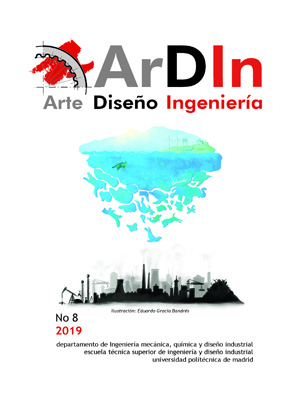Definición conceptual del souvenir: autenticidad en el objeto de recuerdo = Conceptual definition of souvenir: authenticity in the object of remembrance
DOI:
https://doi.org/10.20868/ardin.2019.8.3865Keywords:
Souvenir, Autenticidad, Objetos Turísticos, Identidad Cultural, Objeto simbólico, Authenticity, Tourist Objects, Cultural identity, Symbolic objectAbstract
Resumen
Para definir un objeto por lo general partiríamos refiriéndonos a aquello que podemos hacer con ese objeto, es decir la utilidad que obtenemos de él. Sin embargo ¿Cómo podemos definir un objeto que no es uno, sino muchos? ¿Cómo describir su forma si posee muchas formas? Y sobre todo cómo hablar de su función si teniendo muchas, es una sola la que lo hace ser ese objeto. El souvenir es un objeto que nos plantea estas interrogantes debido a su ambigüedad, por lo que la idea de autenticidad resulta también una categoría compleja de analizar en ellos. En las primeras páginas plantearemos una definición conceptual de los objetos de recuerdo, desde su condición de objetos simbólicos, para intentar organizar a partir de su análisis una categorización acerca de la idea de autenticidad y cómo ésta se relativiza en el proceso de mediatización que implica el diseño de los recuerdos de viaje.
Abstract
To defi ne an object usually would leave referring to what we can do with that object, ie the utility we derive from it. But how can we defi ne an object that is not one but many?
How to describe the way if you have many ways? And especially how to talk about their role if taking many, it is one which makes him the object. The souvenir is an object that raises these questions because of its ambiguity, it is that the idea of authenticity is also a complex category of analysis in these objects. In the fi rst pages we will raise a conceptual defi nition of memorabilia, from its status as symbolic objects, to try to organize from a categorization analysis about the idea of authenticity.
Downloads
References
Augé, M. (1998) El viaje imposible. El turismo y sus imágenes. Barcelona: Gedisa.
Baudrillard, J. (1985) El Éxtasis de la comunicación. En Jean Baudrillard y otros La posmodernidad.
Barcelona: Kairos.
Baudrillard, J. (1990) El sistema de los objetos (11ª ed). México D.F.: Siglo Veintiuno Editores.
Benjamin, W. (2011) La obra de arte en la era de su reproducción técnica. Buenos Aires: El cuenco de plata.
Campi, I. (2007) Diseño y nostalgia. El consumo de la historia. Barcelona: Santacole.
Dorfl es, G. (2010) Falsificaciones y fetiches. La adulteración en el arte y la sociedad. Madrid. Sequitur.
Estevez, F. (2008) Narrativas de seducción, apropiación y muerte o el souvenir en la
época de la reproductibilidad turística. Acto: revista de pensamiento artístico contemporáneo, Nº 4. pp. 34-49.
Estevez, F. y Henríquez, M. T. (2012) El souvenir turístico Banalidad, autenticidad y estética
de la repetición. En Revista de Occidente N° 369. pp. 39-52.
Getino, (2002) Turismo. Entre el ocio y el negocio. Identidad cultural y el desarrollo económico en América Latina y el Mercosur. Buenos Aires: Ediciones La Crujía.
Graburn, N. (1989) Turismo: El viaje sagrado. En Smith, V. (comp) Anfi triones e invitados. Madrid: Endymion.
Laorden, C., Montalvo, M., Moreno, J.M. y Rivas, R. (1982) La artesanía en la sociedad actual. Madrid: Aula Abierta Salvat.
Norman, D. (1990) La psicología de los objetos cotidianos. Madrid: Nerea.
Norman, D. (2004) El diseño emocional. Barcelona: Paidós.
Palou, S. (2006) Reseña de “Trofei di viaggio. Per un’antropología dei souvenir” de Canestrini, Duccio. En Pasos, Revista de Turismo y Patrimonio Cultural. Vol. 4 N° 2 pags. 279-285.
Smith, L. (1989) Anfi triones e invitados. Madrid: Endymion.
Downloads
Published
Issue
Section
License
ArDIn does not charge authors for processing or publishing an article and provides immediate Open Access to its content. All content is available free to the user or their institution. Users are permitted to read, download, copy, distribute, print, search or link to the full text of articles, or use them for any other lawful purpose, without prior permission from the publisher or author. This is in accordance with the BOAI definition of open access.
- Authors retain the copyright and grant to the journal the right to a Creative Commons attribution / Non-Commercial / Non-Derivative 4.0 International (CC BY NC ND) License that allows others to share the work with an acknowledgement of authorship and non-commercial use.
- Authors may separately establish additional agreements for the non-exclusive distribution of the version of the work published in the journal (for example, placing it in an institutional repository or publishing it in a book).
Unless otherwise indicated, all contents of the electronic edition are distributed under a Creative Commons license.













